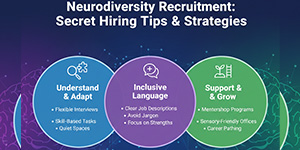What is Equal Employment Policy in the Workplace?
Given the many backgrounds, ethnicities and life experiences of their workforce, companies must foster cultures where all employees are treated with respect and feel appreciated. One essential way to achieve this is by implementing a strong equal opportunity policy that sets clear expectations for fairness, respect, and equal treatment.
But what is equal employment policy in the workplace really about? It involves more than only following the law, it involves creating a culture in which skill and diligence, rather than individual traits or prejudices are the sole requirements for success. Through diversity, a well-written equal opportunity policy fosters creativity, empowers staff, and enhances brand reputation.
In this detailed guide, we’ll walk you through everything you need to know about the equal opportunity policy, including its meaning, importance, real-world examples, ready-to-use templates, and step-by-step instructions on building an effective and impactful policy that fits today’s evolving workforce.
Understanding Equal Employment Opportunity Policy
Before you build an inclusive workplace, you must understand the core principles. The definition of a policy on equal opportunities and its importance for companies striving for compliance and fairness will be covered in this section.
An equal opportunity policy ensures that all individuals have the same chance for employment, promotion, and other work-related benefits, regardless of race, gender, disability, age, religion, or background. In simple terms, an equal employment opportunity policy is a company's commitment to creating a discrimination-free workplace.
Organizations that embrace equal opportunity policy in the workplace not only meet legal obligations but also cultivate a positive, innovative, and productive work culture. Moreover, an effective equal opportunity and anti-discrimination policy promotes fair treatment across every department and level of the organization.
Why is an Equal Opportunity Policy Important?
Wondering why companies invest time and effort into developing these policies? This section emphasizes the importance of having a strong equal opportunity policy for both company growth and also employee satisfaction.
A strong equal opportunity policy serves numerous important purposes:
- Compliance: It satisfies legal standards while preventing lawsuits also.
- Reputation: Enhances the brand's reputation as a socially responsible employer.
- Productivity: Diverse teams perform better and develop faster.
- Retention: When employees feel valued, they tend to stay with the company longer.
Moreover, companies that showcase a clear equal opportunity employer policy example in their communications emphasize their dedication to diversity and ethical standards also.
Companies that prioritize an equal opportunity policy for persons with disabilities also gain from increased workplace innovation and a larger skill pool.
Key Components of an Equal Opportunity Policy
A successful policy is carefully crafted; it doesn't just happen. The essential components of every effective equal employment opportunity policy are broken down in this section.
Creating a comprehensive equal employment opportunity policy involves several core elements:
- Statement of Commitment: Make it apparent that you are committed to giving all workers and also applicants the same chances.
- Scope and Coverage: Indicate who is protected by the policy (interns contractors employees and applicants also).
- Protected Characteristics: Include criteria such as race gender handicap religion age and so on.
- Complaint Handling Procedures: Outline how employees can report prejudice and how the organization will respond.
- Training & Education: Ongoing training to raise awareness and minimize unconscious bias.
- Monitoring and Evaluation: Conduct a periodic examination of the policy's efficacy.
Including a strong equal opportunity policy for persons with disabilities shows the company's dedication to respect and accessibility for all people.
Step-by-Step Guide to Create an Equal Opportunity Policy
A defined path makes it easier to create an inclusive workplace policy. This method will assist you in creating and also implementing a successful equal opportunity policy from the ground up.
Step 1: Research Legal Requirements
Understand all federal state and local regulations regarding equal employment opportunity policy.
Step 2: Draft a Policy Statement
Clearly define your organization's commitment to an equal opportunity policy in the workplace.
Step 3: Include Specifics
Mention protected characteristics, anti-harassment measures, and procedures for grievances.
Step 4: Customize for Disabilities
Add a special section focusing on equal opportunity policy for persons with disabilities. Detail reasonable accommodations.
Step 5: Develop Training Programs
Educate employees about the equal opportunity and anti-discrimination policy to ensure understanding.
Step 6: Showcase Real Examples
Providing a real-world equal opportunity employer policy example can inspire trust and confidence among your employees.
Step 7: Review and Update Regularly
Laws change; your equal opportunity policy ought to change as well. Conduct yearly evaluations and include staff members in feedback loops.
Real-World Examples of Equal Opportunity Policies
Theory becomes powerful when you see it in action. In this section, we provide real-world examples and answer "what is an example of equal opportunities?" to motivate you to make productive decisions for your company.
Example 1: TechCorp Solutions
TechCorp’s equal employment opportunity policy states that they provide employment decisions without regard to race, color, religion, gender identity, disability or veteran status. They highlight specific initiatives to promote women in technology setting an excellent equal opportunity employer policy example for global tech industries.
Example 2: GreenLife Retail
GreenLife’s equal opportunity policy for persons with disabilities demonstrates a proactive attitude to diversity by providing hiring managers with specialized training to eradicate unconscious prejudice and by providing accessible interview sites. Their actions offer a clear answer to anyone asking "what is an example of equal opportunities?"
Another practical equal opportunity employer policy example is when a retail chain provides bilingual training programs to make sure that skilled employees may progress in their professions despite language barriers. This demonstrates how companies should support equality throughout an employee's career, not only during the hiring process.
If you’ve ever wondered "what is an example of equal opportunities?" These programs are what actually have an influence on actual workplaces.
Using an Equal Opportunity Policy Template
Need a shortcut to writing a professional policy? This section explains how using a ready-to-go equal opportunity policy template can save time and ensure nothing important is missed.
A solid equal opportunity policy template helps organizations quickly build a compliant and comprehensive document. Here's what a basic equal opportunity policy template should include:
- Introduction and commitment statement
- Definitions of discrimination and harassment
- List of protected characteristics
- Complaint procedure
- Disciplinary actions for non-compliance
- Responsibility of managers and employees
- Resources for support and questions
- Examples and case studies showing "what is an example of equal opportunities?" to inspire best practices.
Using a well-crafted equal opportunity policy template guarantees that nothing crucial is omitted and that staff, new hires, and outside partners are all aware of your company's position.
Common Challenges When Implementing an Equal Opportunity Policy
Even the best policies can face hurdles. Let's study typical obstacles and strategies for overcoming them so that you can equal opportunity and also anti-discrimination policy a real success.
Despite the best intentions, companies may face several hurdles:
- Unconscious Bias: Training can help overcome hidden prejudices.
- Opposition to Change: Leadership commitment and clear communication are essential.
- Inconsistent Enforcement: Every employee must receive the same treatment under the policies.
Overcoming these challenges strengthens your equal opportunity and anti-discrimination policy, making it more effective. Sharing internal success stories can help overcome resistance and increase employee buy-in also. These are equal opportunity employer policy example in action.
Conclusion
A robust equal opportunity policy is a company's identity, not merely a written document. Finally, let's not forget the important aspects of creating a dynamic and equitable workplace also.
Building and implementing a strong equal opportunity policy is crucial for modern workplaces that value diversity, equity and inclusion. Whether you're drafting a brand-new equal employment opportunity policy or refining your existing equal opportunity and anti-discrimination policy, remember that commitment must come from the top down.
Use real-world examples, adhere to detailed instructions, and project a professional equal opportunity policy template to ensure success. When asked, "what is an example of equal opportunities?" your company should proudly point to its everyday practices and results. With a robust equal opportunity policy in the workplace, companies create a more dynamic, respectful, and thriving environment for everyone.
Read More: A Guide to Jobs in 2024, Cambodia Job Hiring Employment Opportunities





